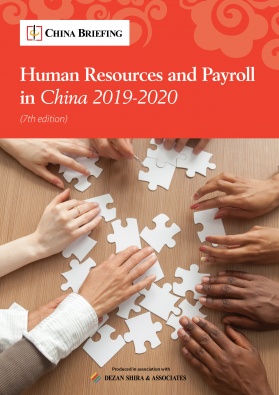ASEAN-China FTA Amendments to Ease Market Access
In August 2019, the amendments to the ASEAN-China FTA came into force, simplifying the rules for trade of goods, services, and investments in the ASEAN-China economic zone that is home to over 1.8 billion people.
Last year, the total volume of trade between China and ASEAN countries hit a record high of US$587.87 billion, up 14.1 percent from the previous year – overtaking the US for the first time since 1997. For ASEAN, 2018 also marked the ninth consecutive year of China as ASEAN’s largest trading partner due in part to China’s geographic proximity as well as the multilateral trade partnership that began in 2004.
ASEAN-China now look to strengthen this existing multilateral trading system to unlock new business opportunities for all countries involved. The two giant economic blocs recently ratified the Framework Agreement on Comprehensive Economic Cooperation and Certain Agreements thereunder between ASEAN And China (“ACFTA Upgrading Protocol”).
Beginning August 2019, the upgraded protocol will make changes to the ASEAN-China Free Trade Agreement (ACFTA) by simplifying the rules of origin, custom procedures, trade facilitation measures, and investment regulations.
ACFTA amendments
The ACFTA Upgrading Protocol makes four key changes to the original ASEAN-China Free Trade Agreement signed in November 2002.
Simplifies rules for the trade of goods
This protocol upgrades and simplifies the rules of origin, which governs the origin of commodities and in turn establishes its eligibility for preferential tariff treatments available under the FTA.
Specifically, it now clarifies the multiple ways in which the origin of good is to be decided.
- Firstly, the origin of goods will be deemed according to the country in which the good was wholly produced or obtained.
- Alternatively, if the good was produced in multiple countries, the regional value content (RVC) must be at least 40 percent of the value of the goods and the final process of production must be performed within a country party to the FTA.
- Lastly, a series of Product Specific Rules have been included to clarify the origin of goods for products that had undergone sufficient transformation in the supply chain or experienced a change in tariff classification.
In addition to this, a new section has been added for customs procedures and trade facilitation, which clarifies the operational certification procedures for applying and obtaining preferential tariffs. ‘Form E‘, introduced by the protocol, verifies the eligibility of export products for preferential treatment.
Simplifies rules for the trade of services
The protocol details specific rules for market access for sectors, such as engineering, construction, sporting, healthcare, securities, and tourism services.
The rules are offered in table form in Annexure 2 of the Protocol – which specifies China’s positions towards each ASEAN member country in terms of the limitations on market access and limitations on national treatment.
Strengthens investment provisions
The amendment adds provisions that explicitly call for member parties to: simplify procedures for investment applications, improve access to investment laws, rules, regulations, and procedures, and utilize existing investment promotion agencies where necessary.
Improves multilateral economic and technical cooperation
Under the amendments, the respective parties are encouraged to undertake deeper economic and technical cooperation on activities that will bring mutual benefit.
Area of focus mentioned within the Protocol include:
- Trade-related issues;
- Agriculture, fishery, forestry and forestry products;
- Information and communications technology;
- Human resource development;
- Investment;
- Trade in services;
- Tourism;
- Industrial cooperation;
- Transport;
- Intellectual property rights;
- Small and medium enterprises;
- Environment; and
- Other fields related to economic and technical cooperation as may be mutually agreed upon by the Parties.
Focus on strengthening multilateral trade linkages
While more countries are seemingly opting for growing protectionism, the Southeast Asian region and China are actively forging stronger regional and global trade and investment ties.
In the ‘China-ASEAN Strategic Partnership Vision 2030’ adopted last year, the two sides agreed to realize a goal of US$1 trillion in bilateral trade and US$150 billion in investment by 2020.
Complimenting this, China and ASEAN are also working towards an early conclusion to the Regional Comprehensive Economic Partnership (RCEP) agreement, which is expected to boost trade and economic integration among ASEAN members and its six trading partners – China, Japan, South Korea, Australia, New Zealand, and India.
Since ACFTA came into force, China’s share of ASEAN’s total merchandise trade increased from eight percent in 2004 to 21 percent in 2018. With its large cumulative population and high growth potential, ASEAN region continues to offer many opportunities for businesses.
With no end in sight for the US-China trade war, the updated Protocol to the ASEAN-China FTA also allows China to gain better access to the neighboring region as a whole and diversify its focus from European and US markets.
About Us
China Briefing is produced by Dezan Shira & Associates. The firm assists foreign investors throughout Asia from offices across the world, including in Dalian, Beijing, Shanghai, Guangzhou, Shenzhen, and Hong Kong. Readers may write to china@dezshira.com for more support on doing business in China.
- Previous Article What Does John Bolton’s Departure as US National Security Advisor Mean for China, Russia, North Korea, and Iran?
- Next Article China’s New Policy for VAT Credit Refund for Some Advanced Manufacturers







